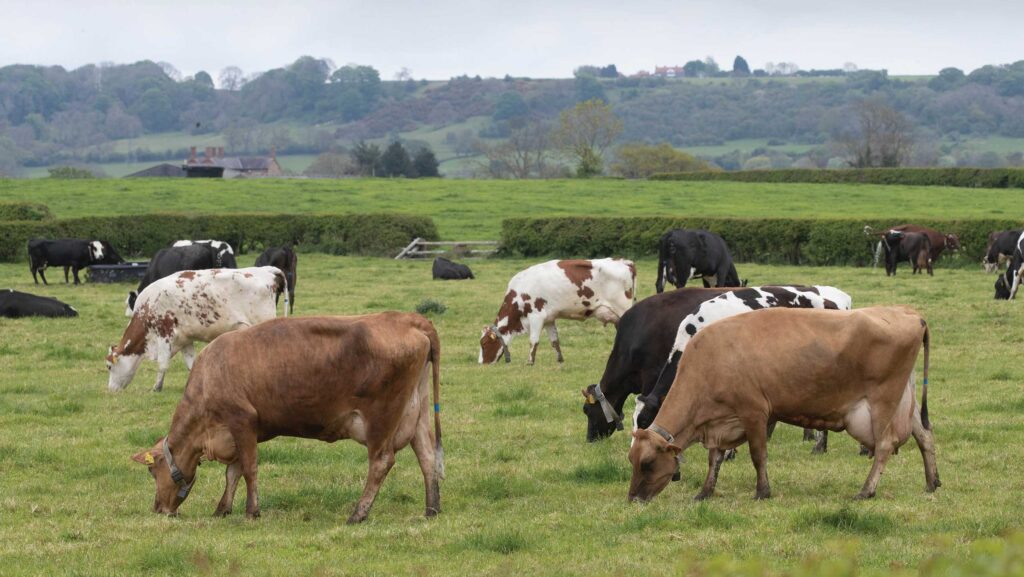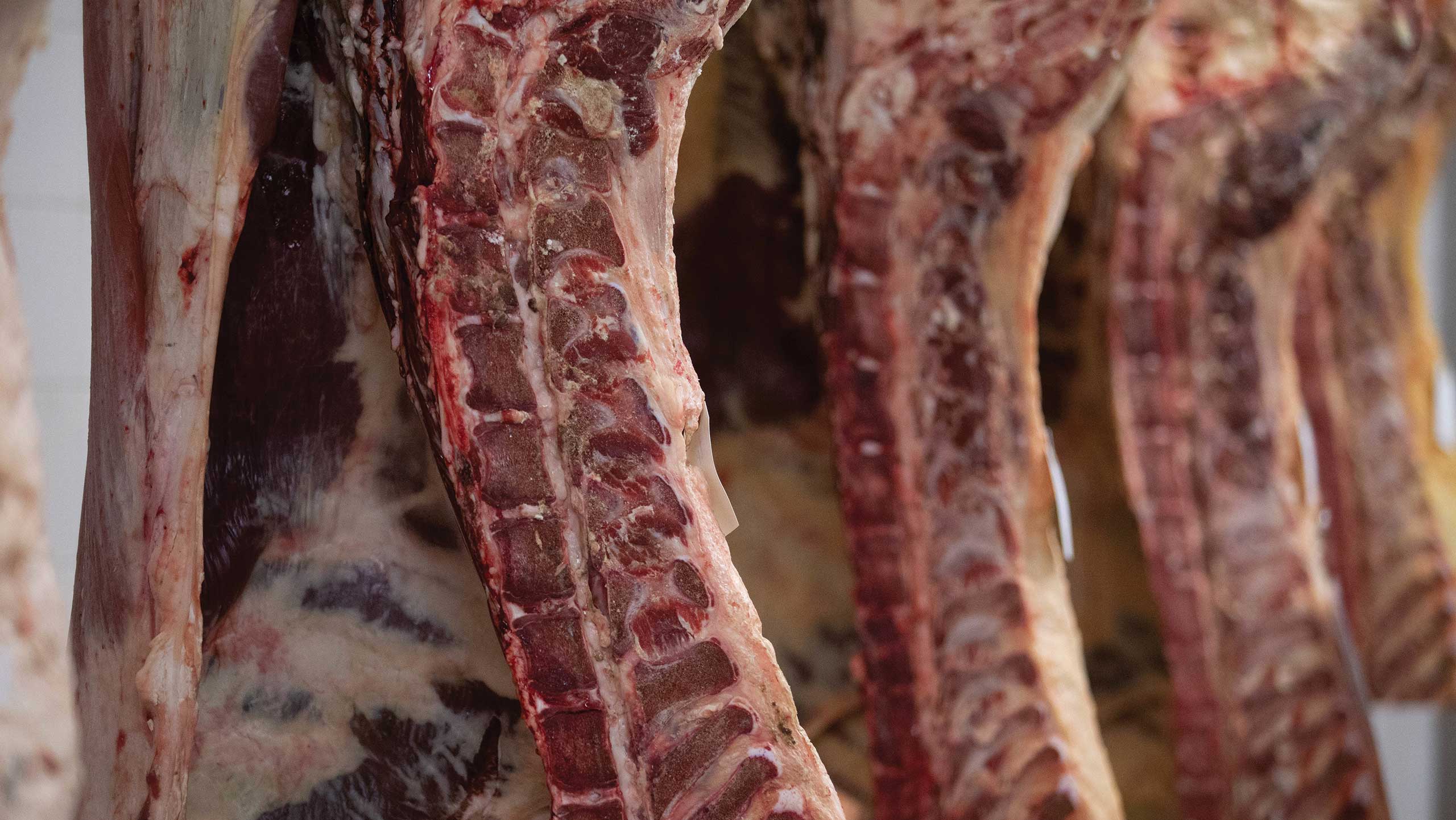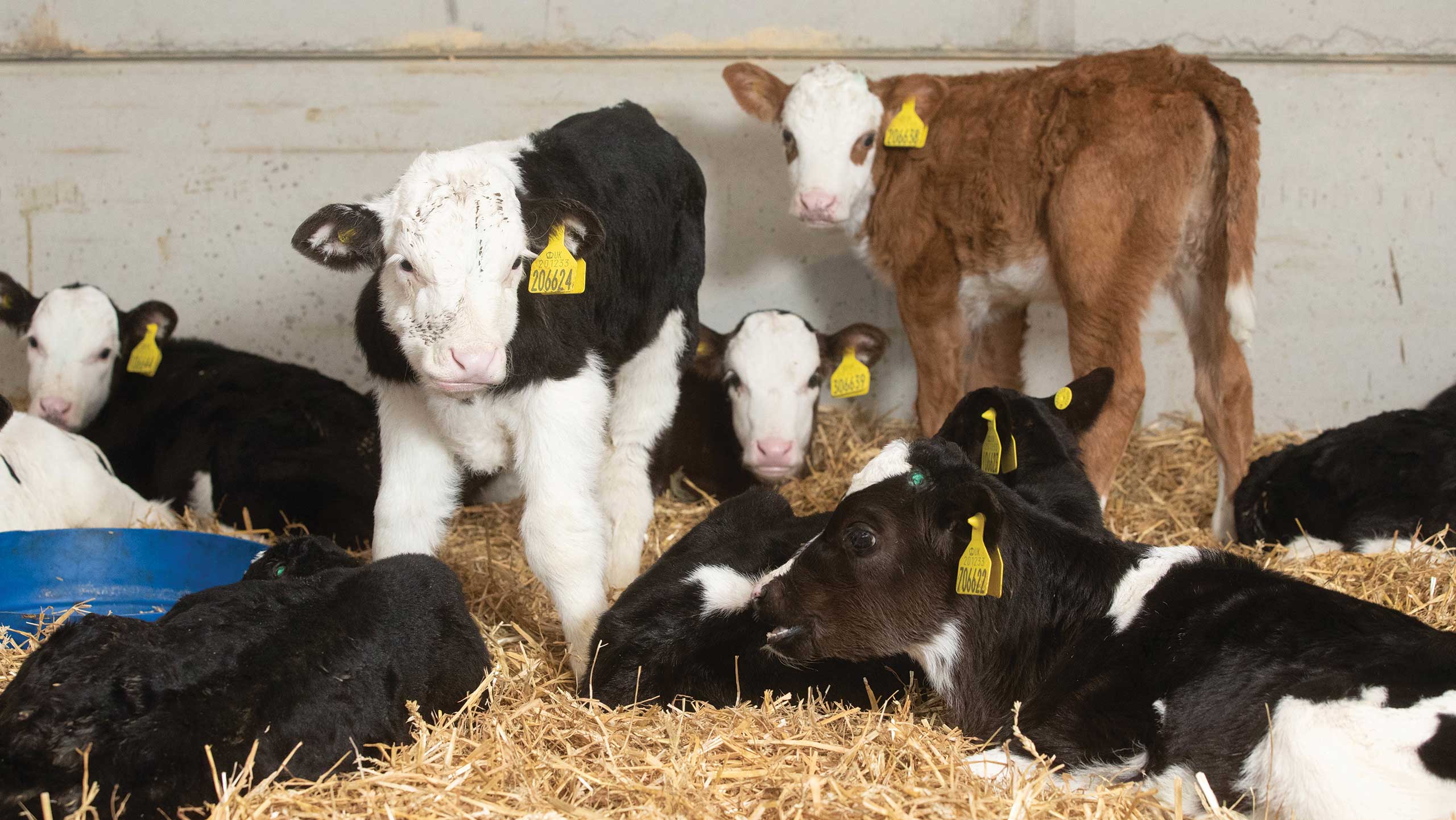Are smaller dairy cows a concern for the beef supply chain?
 © Tim Scrivener
© Tim Scrivener The drive for smaller dairy cows has gained momentum over recent years as more milk producers appreciate the efficiencies of a lower cow maintenance cost.
But while this trend has led to economies in milk production, its impact on the beef sector has not always been considered.
The rapid uptake of female-sexed dairy semen in the UK has run in parallel with this trend and given dairy producers the opportunity to serve a large proportion of their herds to beef breeds.
Mirrored by a decline in suckler cow numbers, the overall effect has been that more than half the UK’s beef production now originates in the dairy herd.
According to AHDB head of animal genetics Marco Winters, some 53% of the semen dairy producers buy is for a beef breed.
However, the inevitable effect of this is that much of the UK’s beef comes from cows that the dairy industry is striving to reduce in size. This raises the question of their suitability for producing beef.
The numbers

© Tim Scrivener
3.5% Dairy beef carcasses less than 260kg
1.8% Suckler-bred beef carcasses less than 260kg
9.2% Dairy beef carcasses less than 260kg from dairy cows weighing less than 450kg liveweight
Source: AHDB research using National Beef Evaluations
Kill sheet data
“I often hear smaller dairy cows raised as a concern for the beef supply chain, but I’ve not seen good evidence to back this up,” says Dr Harriet Bunning, AHDB’s lead animal genetics expert for beef.
She studied data from National Beef Evaluations – which includes dairy cow kill sheets – to investigate the issue.
Using each cow’s carcass weight as a proxy for her liveweight, she matched them with the kill sheets of that cow’s calves. Assuming carcass weights at 50% of liveweights, she also corrected for factors such as choice of sire and sex of calf.
“We looked at the relationship between the dam and the carcass weight of her calves.
“We found that although small dairy dams tended to have smaller calves, there was a wide range of carcass weights for the cows’ progeny, and it was clearly possible for a small dairy dam to produce offspring with an acceptable carcass,” she says.
Abattoir specification
Harriet then checked her findings against the typical payment scale for UK abattoirs.
“A base price is typically offered for carcasses from 260-430kg, and we were interested to see if dairy beef fell short of this range,” she says, remarking that the lower cut-off can fluctuate according to the market and can be raised to 280kg when the beef price is high (see table below).
This revealed that 3.5% of dairy beef carcasses did not reach the 260kg cut-off (while 96.5% did).
The data also showed that for every 1kg less carcass weight in the dairy dam, there was just a 0.13kg reduction in the prime carcass weight of her offspring.
Using all the UK’s carcass data from 2020, suckler beef was also studied to see how it compared with this dairy beef performance.
Typical abattoir penalties by carcass weight |
|
|
Weight range |
Penalty |
|
260-430kg |
No penalty |
|
250-259kg |
15p/kg |
|
240-249kg |
25p/kg |
|
Less than 240kg |
60p/kg |
| Source: AHDB | |
“Only 1.8% of suckler-bred beef did not achieve at least a 260kg carcass, meaning they had an expected but small advantage over dairy beef,” she says.
The study was then widened to home in on different weight ranges and to identify whether the progeny of the very smallest (less than 450kg liveweight) dairy cows would meet the grade.
In this instance, it was found that 9.2% of the sub-group’s progeny failed to reach a carcass weight of 260kg.
“That’s a big increase compared with suckler beef. But equally, it’s still clear that 90.8% of the progeny from the smallest dairy cows avoided financial penalties for their low carcass weight,” says Harriet.
However, she did acknowledge anecdotal evidence that integrated beef supply chains usually opted not to work with herds of such small cows.
False economy
So, should the beef industry accept the small proportion of underweight carcasses from the dairy industry, or should dairy farmers seek to increase the size of their cows?
Marco is emphatic that dairy cows should be bred for efficient milk production unless the beef sector sends stronger market signals. “If the beef supply chain wants dairy farmers to behave differently, they have to reward them,” he says.
“This means rearers and finishers should send better market signals to compensate the dairy farmer for producing bigger calves.”
This compensation would be due because of the inbuilt inefficiencies associated with dairy farmers keeping larger cows. “A larger dairy cow has to be fed more for her maintenance every day of her life,” he says.
“That could mean over six years of extra cost every day, just to achieve a slightly higher price from up to four calves and from her own carcass at the end of her life.
“That’s a completely false economy and definitely doesn’t make it worth breeding large cows,” he argues.
Prof Mike Coffey, from SRUC and Edinburgh Genetic Evaluation Services, concurs.
He undertakes genetic evaluations for dairy and beef – many on behalf of AHDB – and says the extra feed costs to maintain a larger dairy cow would far outweigh any beef value.
“Every extra 100kg in a cow’s bodyweight requires 1,400kg more milk to create the same level of profitability,” he adds.
This means a 700kg cow would need to produce 11,400kg milk to achieve the same profitability as a 600kg cow giving 10,000kg.
This also has implications for carbon emissions, which Mike says are proven to be lower in the more efficient animals.
“Meat processors cannot expect the dairy industry to be inefficient simply to produce bigger carcasses,” he points out.
Options for dairy producers with very small cows

© Tim Scrivener
All three experts agree that the very smallest cows (less than 450kg) are undesirable for the beef supply chain, but mitigating measures can be taken to minimise their impact.
“A lot of producers with small cows are running a stock bull or select an AI sire with just calving ease and gestation length in mind,” says AHDB’s Harriet Bunning.
However, beef sires with higher estimated breeding values for growth rates and carcass traits could be used, while still being mindful of key dairy traits, she adds.
Farmers have been urged to record their sires when they register progeny with the British Cattle Movement Service to raise awareness of their genetic potential and the future value of the calf.
AHDB’s Marco Winters observes that the dairy industry has bred for improved feed efficiency for many years, which in itself affects the growth of dairy beef.
“If dairy cows become more feed efficient, then dairy beef becomes more feed efficient as the genetics of the dam trickle down to the progeny,” he says.
Evidence is clear that the push to reduce the size of dairy cows is having minimal impact on beef and should not be discontinued. To that end, SRUC’s Mike Coffey advises optimal efficiency.
“The drive should not be [towards] very small dairy cows, but for large cows to [become] smaller,” he says.
